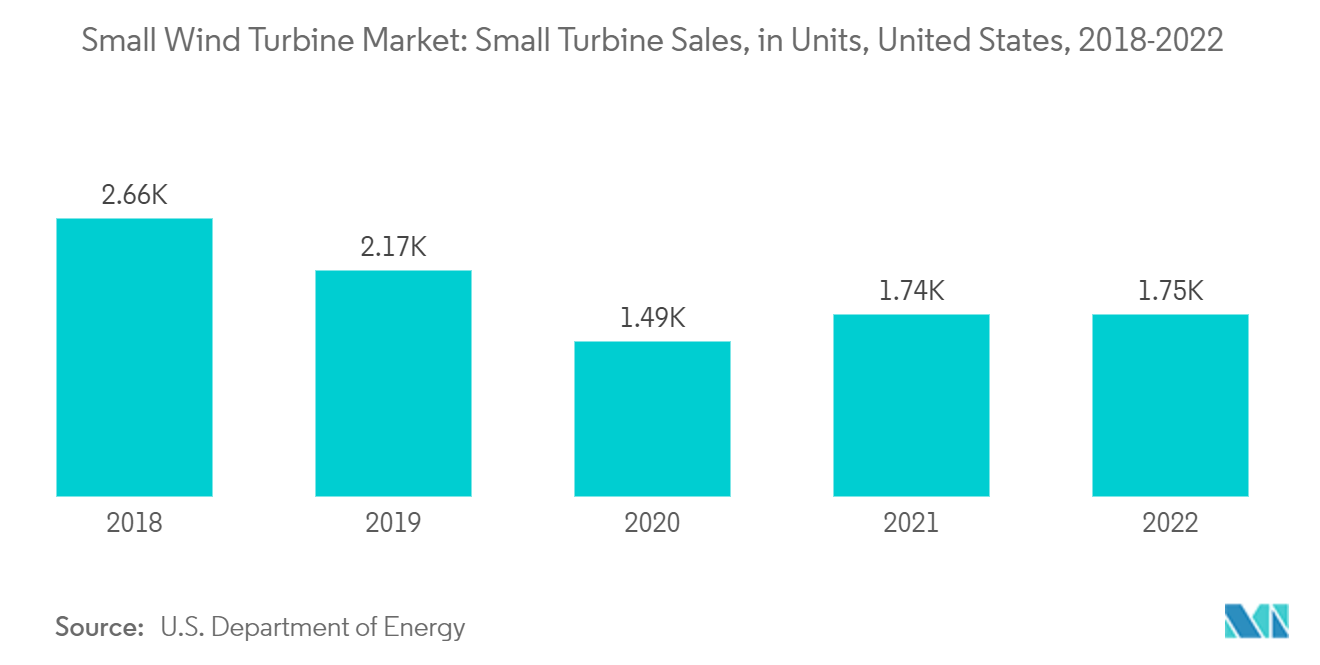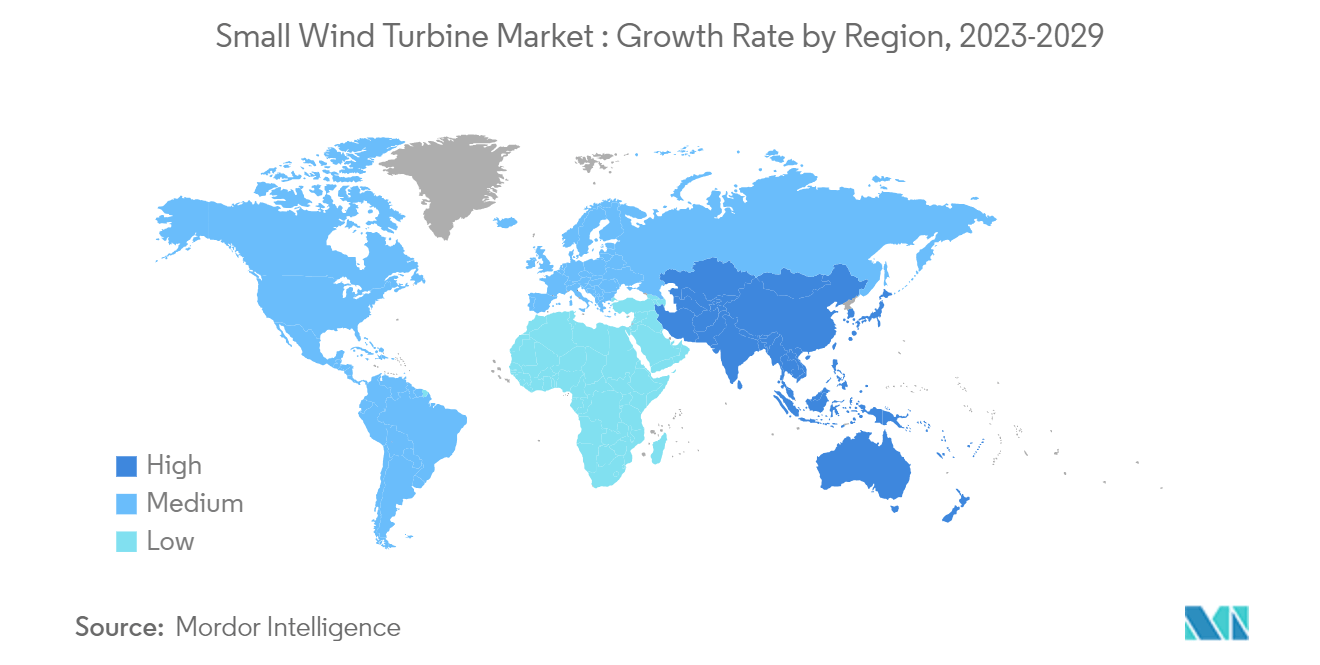Market Trends of Small Wind Turbine Industry
The Horizontal Axis Wind Turbine Segment is Expected to Witness Significant Growth
• A majority of small wind turbines (SWT) manufactured today are horizontal-axis, upwind machines that have two or three blades, usually made of composite materials such as fiberglass.
• A horizontal axis wind turbine (HAWT) has its main rotor shaft and electrical generator at the top of the tower, and a simple wind vane is used to point the turbine toward or away from the prevailing wind.
• Small wind turbines consist primarily of horizontal axis wind turbines that have been in production for over three decades, whereas most small vertical axis wind turbines (VAWTs) have been produced within the last decade. Due to the technological and economic advantages associated with the small HWAT, it receives considerable attention. In addition to low-cost wind energy generation, small horizontal-axis wind turbines can be maintained easily and without a skilled workforce.
• Furthermore, there are two types of small HAWTs. The first is a typical three-bladed design, while the second is an aerodynamically complex, shrouded type. Both types have a similar rate power of approximately three kW.
• Among the advantages of small HAWTs is their tall tower bases, which allow them to gain greater access to wind at sites with wind shear (where variations in wind velocity occur at right angles to the wind direction and tend to exert a turning force). As a result of stronger wind access, power generation is likely to increase. This is likely to result in moderate deployment of these units during the forecast period.
• Small wind turbines are used throughout the developing and developed nations across the region and are used mainly in rural or remote settings. As per the historical data by the US Department of Energy in their Distributed Wind Market Report: 2022 Edition, the growth in the SWT market is restricted to countries like the United Kingdom, Denmark, Italy, and Germany.
• Further, according to the United States Department of Energy, the number of small wind turbines in the United States reached 1,745 units in 2022, having an investment of USD 14.6 million. In the future, investment in distributed projects attributing small-scale solar and small-scale wind is expected to increase with the efforts of the government to provide financial support through schemes and subsidies.
• Moreover, companies are undergoing research & development to develop small wind installations. In April 2024, FREEN, a global small wind turbine manufacturer, started examining the promising landscape of small wind energy in developing countries. Such an initiative will fuel the scope of the market in the future.
• Therefore, owing to the above points, the horizontal axis wind turbine segment is expected to dominate the market during the forecast period.

Asia-Pacific is Expected to Dominate the Market
• Asia-Pacific dominated the wind power generation market in 2023 and is expected to continue its dominance in the coming years. The region holds vast potential for expanding the small wind turbine market, notably in the form of off-grid and residential-scale small wind turbines.
• Small wind turbines can run at wind speeds as low as two meters per second. They can be connected to the grid or stand-alone systems, hybridized with solar, or mounted on rooftops.
• China holds the largest wind power generation capacity globally, with 441.89 GW of installed capacity as of 2023. The country also installed 60 MW of small wind turbines in 2022, reaching a cumulative installed capacity of 704.32 MW. The country first introduced FiT from onshore wind in 2009; it currently offers FiT for small wind turbines ranging from USD 13.4-20.1 ct/kWh.
• Chinese small wind turbine applications are shifting from rural electrification oriented to city street illumination and telecom stand-alone power systems. It is developing rapidly in these new application fields.
• On the other hand, India holds the fourth-largest wind power installed capacity in the world. The country's wind power installed capacity stood at 44.7 GW as of 2023. Regarding SWTs, almost all the systems installed in India today are off-grid or stand-alone. The state of Maharashtra has the majority of the SWT installations in the country. The otherwise 'windy' states like Tamil Nadu and Gujarat fare poorly in the SWT installations.
• The region is expected to have more small wind turbine projects in the future, owing to the continuous increase in China and India's wind generation capacity. Thus, investments in developing small wind infrastructure are expected to grow in the upcoming years.
• Therefore, owing to the above points, Asia-Pacific is expected to dominate the small wind turbine market during the forecast period.


